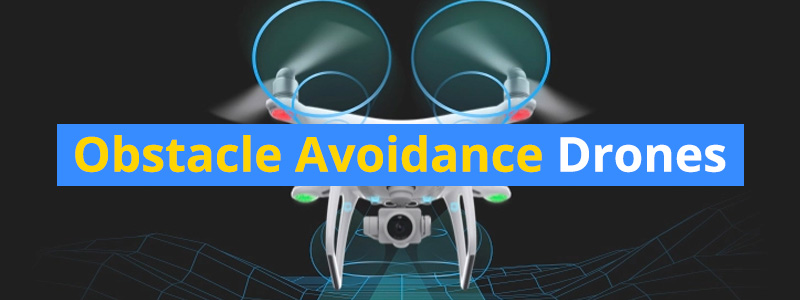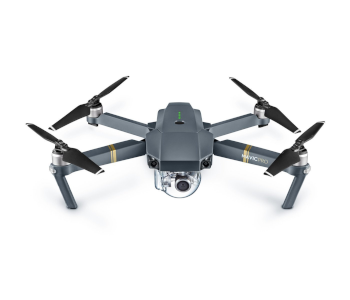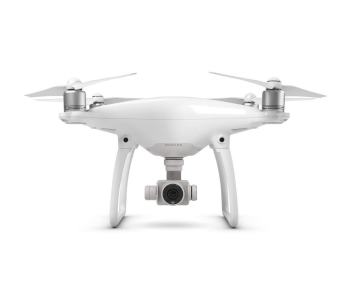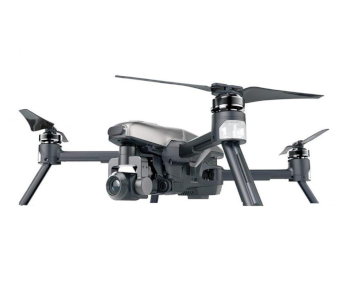9 Best Obstacle Avoidance Drones
Interested in buying an obstacle avoidance drone, but have no idea where to look or how to select one? If obstacle avoidance is the primary desired feature for your next drone then you’re in luck. There is plenty of choice available that offers some of the best craftsmanship in the industry.
We take a look at the best obstacle avoidance drones below. Obstacle avoidance requires a lot of expensive sensors, so you should expect to pay $500 – $3000 for one.
| Budget |
|---|
 |
| Tenergy TDR Phoenix Mini |
| 4.0/5.0 |
| Control range: 40 meters |
| Flight time: 6 Minutes |
| Competitive price, portable, 720p HD camera. |
| Check Amazon |
| Best Value |
|---|
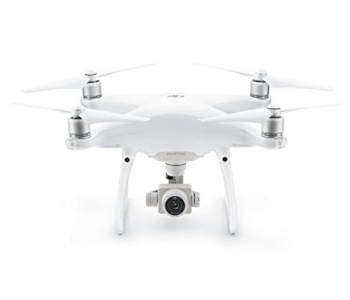 |
| DJI Phantom 4 Pro |
| 4.7/5.0 |
| Control range: 5,000 meters |
| Flight time: 30 minutes |
| Long control range, GPS navigation, 4K video capture. |
| Check Amazon |
| Top Pick |
|---|
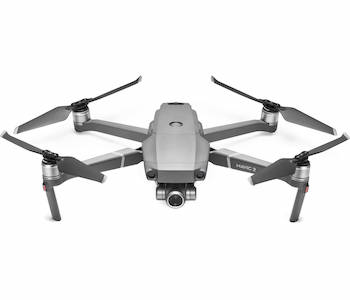 |
| DJI Mavic 2 Zoom |
| 4.7/5.0 |
| Control range: 8,000 meters |
| Flight time: 31 minutes |
| Wide–telephoto zoom lens and 360 degree sensors. |
| Check DJI.com |
You’ll probably want to know about other drone features too. In this top obstacle avoidance drones guide we will share the buying considerations to make. The devil is in the details with technology products like drones.
We will also discuss reasons to get an obstacle avoidance drone. Perhaps you’re on the fence about if you really one. After all, it is a sizable investment to make. Most budget drones do not have advanced features like obstacle avoidance.
We have research the top obstacle avoidance drones across different price ranges to help you decide. You don’t have to spend hours trying to pick out the best ones as we have done it for you. Whatever selection you make you can’t go wrong by selecting an option from our list.
In the next section you’ll learn about the potential uses of a collision avoidance drone. If you’re familiarizing yourself with the technology for the first time, then you might be wondering about the uses and benefits.
Reasons to Get an Obstacle Avoidance Drone
There are a lot of reasons to spend the extra money to get an obstacle avoidance drone. Let’s take a look at a few:
Save on repair costs
Beginner friendly
Perfect for content creators
Buying considerations
In this section we will cover the aspects you must consider to make an informed buying decision. There are a variety of features that you need to look for in drones to get the maximum use out of them. Drone technologies have advanced considerably in recent years, thanks to their explosion in popularity.
Camera
Type of sensors
Flight time
Control range
Items by price:
Obstacle Avoidance Drones Comparison Table
| Make and Model | Control Range | Flight Time | Price |
|---|---|---|---|
| Tenergy TDR Phoenix Mini | 40 meters | 6 Minutes | Check Price |
| Wingsland S6 Premium | 100 meters | 10 minutes | Check Price |
| DJI Mavic 2 Zoom | 8,000 meters | 31 minutes | Check Price |
| DJI Mavic Pro | 7,000 meters | 27 minutes | Check Price |
| DJI Phantom 4 | 5,000 meters | 24 minutes | Check Price |
| Walkera VITUS 320 | 1,500 meters | 28 minutes | Check Price |
| Yuneec Typhoon H Pro | 1,000 meters | 25 minutes | Check Price |
| DJI Phantom 4 Pro | 5,000 meters | 30 minutes | Check Price |
| DJI INSPIRE 2 | 7,000 meters | 20 minutes | Check Price |
Best Obstacle Avoidance Drones Under $300
In this category you’ll notice some outliers in the obstacle avoidance category because these are by far the cheapest options. Especially the first drone on the list, which comes at the budget price point of around $40.When you consider the price point of the two drones in this price bracket the value is superb.
This goes to show that you do not need to put a big dent in your wallet in order to take advantage of the obstacle avoidance feature. Once you’ve seen the feature in action, and understand its significance, then you can move onto more expensive models in the future.
1. Tenergy TDR Phoenix Mini RC Drone (Best Budget)
Editor’s Rating: 4/5
The cheapest obstacle avoidance drone on the market is the Tenergy TDR Phoenix Mini. If you’re looking for advanced features are a dirt-cheap price point then you can’t go wrong with the Tenergy TDR Phoenix. You’ll instantly notice from the visual design that it’s a cheaper drone. The other entries on this list have a more refined and professional look.
Since this is a beginner drone, the obstacle avoidance helps you learn the ropes of flying a drone without crashing. One button stunt moves are also included such as 360 degree rolling, which allows you to impress family/friends. You do not need a lot of time with the Tenergy TDR Phoenix to look like you’ve mastered the basics.
The obstacle avoidance unit is attached to the bottom of the drone. It activates once it’s 2-3 feet away from objects. The drone stops approaching the object and halts automatically. This feature only works when it is 3 feet above ground. It uses infrared sensors. Therefore, if the object is glass the obstacle avoidance might not work properly. Also when flying directly under the sun the feature may struggle, due to the naturally produced infrared of the sun. Finally, the feature works best when the drone operates at low speed.
A 720p camera is included, which can be used to capture great looking footage from the sky. For those who are just starting out with drone content creation will love the inclusion of a HD camera in this model. The 6 axis gyro stabilization system allows the drone to be composed after rapid movement. This contributes to better footage when recording video.
The Conclusion
The Tenergy TDR Phoenix Mini is one of the best options at the budget end of the scale. The mix of obstacle avoidance, a 720p HD camera, 6 axis gyro stabilization, and one-key stunt moves means you’re getting a lot of value for the cost. You’ll struggle to find better drones at the budget end of the scale.
| Tech Specs |
|---|
| Weight: 2.08 ounces |
| Battery: Lithium polymer |
| Charging Time: 90 minutes |
| Control range: 40 meters |
| Flight time: 6 minutes |
| Obstacle avoidance sensors: Infrared |
| The Pros |
|---|
| 720p HD camera |
| Competitive price |
| Portable |
| The Cons |
|---|
| Short flight time |
| Short control range |
2. Wingsland S6 Premium Drone
Editor’s Rating: 4.2/5
This drone is rather unique in the marketplace because of the orange color. The Wingsland S6 Premium offers a bunch of excellent features, including obstacle avoidance at a competitive price point. The majority of drones in this list will be at a significantly higher price point than the Wingsland S6. Therefore, this is a great choice for the beginner budget buyer.
The Wingsland S6 comes with 5 obstacle avoidance components. Therefore, it can avoid objects from 5 directions: left, right, front, back, and upside. The sensor type is infrared, which means transparent surfaces like glass can be a problem.
The compact and foldable design means you can take it wherever you go. The 4 rotors can be tucked away to fold over the body of the drone. This feature contributes to the nickname of this drone – the selfie drone. It allows you to quickly take out the drone and take pictures of yourself in your surroundings.
Also the collision avoidance drone weighs just 230g, but the low weight doesn’t contribute to a long battery life. One of the negatives here is that the battery life is only 10 minutes long. You’ll need to buy additional batteries to get a longer flight time when taking the drone outdoors.
The camera allows you to take 13MP pictures, which at this price point is very competitive. The quality of the camera means your selfies will be some of the best pictures you’ve ever taken. Also the video capture is at 4K resolution, which is what you’d want out of a modern drone.
There is an app that allows the drone to be controlled via your smartphone. Therefore, you won’t need to carry around a separate controller to operate the pocket sized drone.
The Conclusion
The Wingsland S6 Premium obstacle avoidance drone is one of the budget options on the market. It provides great value for money because of the impressive camera and array of flight features.
| Tech Specs |
|---|
| Weight: 1.21 pounds |
| Battery: Lithium polymer |
| Charging Time: 60 minutes |
| Control range: 100 meters |
| Flight time: 10 minutes |
| Obstacle avoidance sensors: Infrared |
| The Pros |
|---|
| Great camera |
| Competitive price |
| portable |
| The Cons |
|---|
| Short flight time |
| Short control range |
Best Obstacle Avoidance Drones Under $1,500
Typically the obstacle avoidance feature is available in drones that represent a significant investment. There is no question about it – the feature is quite pricey. Therefore, the first price category that’s worth paying attention to is under $1,500 – and there are some real gems in this section.
Here you’ll find some of the best value for money purchases available in the drone marketplace. You’ll see drones that for most will function just as good as higher priced options. Sure the drones in the $2,000-3,000 price range have faster speeds and longer control ranges, but you need to ask yourself if you’ll really benefit from that extra performance. If not, then perhaps the sweet spot purchase for your requirements is in this category.
3. DJI Mavic 2 Zoom (Top Pick)
Editor’s Rating: 4.7/5.0
The DJI Mavic 2 Zoom and Mavic 2 Pro have the best obstacle avoidance systems you can get for the price. They offer just as much obstacle avoidance sensing as drones that cost double the price. The Mavic 2 does a fantastic job at detecting hazards in all directions. Yes, you did read “all directions.”
More Sensors than You Can Shake a Stick At
DJI’s Mavic 2 series boasts forward, backward, upward, downward, and sideways obstacle sensors. This effective sensor system provides better obstacle avoidance than all previous DJI quadcopters. The sensor data goes to the crafts Advanced Pilot Assistant Software or APAS. DJI first introduced APAS with the Mavic Air, but it’s an enhanced system we see on the Mavic 2s.
Obstacle sensors on all sides of the drone is a godsend for pilots, especially beginners. There are more reasons to invest in the Mavic 2 Zoom than its powerful OA system, though.
Reasons to Consider DJI’s Mavic 2 Zoom
The Mavic 2 Zoom sports a 12MP 24-48mm quality optical zoom camera. A drone that can zoom-in is unique. The varying focal lengths give aerial photographers and videographers more creative shooting potential. This quad can fly fast as well, with speeds that reach over 44mph in Sport mode. The flight time and control range is also impressive. Flying time is over 30 minutes and the range 5-miles.
The differences between the Mavic 2 Zoom and Mavic 2 Pro are their cameras and price. The fixed lens on the Mavic 2 Pro is a world-class Hasselblad and is far superior to the Zoom. That’s also the reason for the price differential. Aside from cameras and costs, though, they’re pretty much the same craft.
Follow the links in this review to discover all the fascinating Mavic 2 features in full detail. These newest DJI camera quads are sure to become the models that set new standards.
The Conclusion
The Mavic 2 Zoom is an excellent choice of high-quality camera quadcopter. It has a sophisticated and effective obstacle avoidance system on all sides. It’s a well-engineered aircraft with zoom camera capability. There’s also 8GB of onboard storage and a plethora of DJI intelligent flight features.
| Tech Specs |
|---|
| Weight: 2 pounds |
| Battery: Lithium polymer |
| Charging Time: 90 minutes |
| Control range: 8 km (5 miles) |
| Flight time: 31 minutes |
| Obstacle avoidance sensors: Omnidirectional Sensing (all sides) |
| The Pros |
|---|
| Lightweight Foldable design |
| Wide–telephoto zoom lens |
| Impressive flight time |
| Incredible control range |
| Fast top speed in Sport mode |
| Quiet flyer |
| All round collision detection |
| Intelligent flight features |
| The Cons |
|---|
| Lacks gesture control |
| High cost of spare/replacement Intelligent Flight Batteries |
4. DJI Mavic Pro
Editor’s Rating: 4.6/5
Are you interested in a high-end obstacle avoidance drone that comes with a number of intelligent features? Then the DJI Mavic Pro is a choice that you cannot ignore. It’s designed with the professional in mind, but can also be used by beginners due to the friendly flight features.
The DJI Mavic Pro uses as system called Flight Autonomy for the obstacle avoidance. 7 components are used to detect objects at a distance of 15 meters away. 5 cameras are used, which are composed of the main camera and forward/downward dual vision sensors. Also 2 ultrasonic rangefinders are included where echolocation is used to determine the surroundings. Furthermore, 24 powerful computing cores are used to process the data so that an accurate representation of the surroundings can be built up.
The obstacle avoidance system kicks in when intelligent flying modes are used such as the return home feature, active tracking or terrain follow.
One of the highlights of the DJI Mavic Pro is the 7km control range. This means you can cover a very big area around you, just be careful not to expire the 27 minute battery life. You’ll probably be operating the drone without a line of sight for long period of time, which means the obstacle avoidance feature in this model is particularly important.
The max flight speed of the DJI Mavic Pro is around 40mph, which is fast enough to get some great aerial shots of the area around you. However, you do not need to fly manually in order to operate the drone at max speed.
The automated GPS navigation can be used to instruct the drone where to go. Once you’re done the “return home” feature can be used to quickly fly the drone back to the starting position.
The true 4K video capture is a must for professional content creators and it’s included here. It’s capped at 30fps, but the 1080p video capture is capped at 120fps. The design is solid with regards to camera stability. During fast movements don’t expect jittery video footage. The DJI Mavic Pro is designed to take professional-grade video.
The Conclusion
The DJI Mavic Pro is an excellent purchase for the experienced drone operator ready for a more professional model. The obstacle avoidance features here work well whether the drone is right next to you, or 7km away.
| Tech Specs |
|---|
| Weight: 1.64 pounds |
| Battery: Lithium polymer |
| Charging Time: 60-80 minutes |
| Control range: 7,000 meters |
| Flight time: 27 minutes |
| Obstacle avoidance sensors: Stereo vision and ultrasonic |
| The Pros |
|---|
| Long control range |
| 4K video capture |
| Decent flying time |
| GPS navigation |
| The Cons |
|---|
| Need a smartphone to use all features |
| Difficulty in taking off form grass |
5. DJI Phantom 4
Editor’s Rating: 4.6/5
For a great cost to performance ratio the DJI Phantom 4 is an impressive choice. The mix of a high quality camera, advanced flight features, and high speed flight at 45mph means you’re getting a professional grade product.
The obstacle avoidance feature of the DJI Phantom 4 works via two optical sensors via the front. It navigates around obstacles that are about 0.7 to 15 meters away. Alternatively, it might simply stop and wait for you to move it away. It works very well for avoiding accidental crashes into building, fences and lamppost. However, when it comes to trees the technology has some shortcomings. As a branch moves it can clip the drone, which could potentially send it spiraling downwards.
Intelligent flight support systems use dual satellite positioning to get a better feel of the surrounding landscape. This ensures that collision avoidance is better equipped to avoid the obstacles that can lead to damage. Also the obstacle avoidance feature is excellent when using the tracking feature. This feature fixates on an object and tracks it for smooth video recording. This automated way of recording video allows you to concentrate more on the creative aspect of content creation, and less focus is required on the flying of the drone.
The powerful camera is made for the sky. It can be used to record 4K video at 30fps, and 1080p at 120fps. Creating impressive footage has never been easier from the sky. You can capture events from a sporting even you’re taking part in or even your wedding. When imagination is used the possibilities are endless.
Camera movement is prevented during flight via the 3-axis gyro stabilization system. You will not need to recapture video because of stuttering during flight. Even a gust of wind is experienced the DJI Phantom 4 stabilizes itself to remain level.
The Conclusion
The DJI Phantom 4 is an excellent choice for a consumer looking to invest in an advanced obstacle avoidance drone that comes packed with flight advanced features. Your content creation creativity will be boosted because of how easy to use the DJI Phantom 4 is.
| Tech Specs |
|---|
| Weight: 8.82 pounds |
| Battery: Lithium polymer |
| Charging Time: 60-70 minutes |
| Control range: 5,000 meters |
| Flight time: 24 minutes |
| Obstacle avoidance sensors: Optical |
| The Pros |
|---|
| Long control range |
| 4K video capture |
| Decent flying time |
| GPS navigation |
| The Cons |
|---|
| Need a smartphone to use all features |
6. Walkera VITUS 320
Editor’s Rating: 4.3/5
The Walkera VITUS 320 provides professional grade features at a general consumer price point. There are drones with much higher price points that don’t have a significant advantage over this drone from Walkera.
The obstacle avoidance feature of the Walkera VITUS 320 uses an infrared sensor in three directions: front, left and right. The systems detects objects that are 8 meters away and puts on the brakes to come to a halt by the time it gets closer to the object. Infrared technology for obstacle avoidance is not as good as optical based, because transparent surfaces don’t reflect IR. Also the sun can somewhat overwhelm the sensors causing interference.
The camera records at 4K with 30fps, or 1080pat 60fps. The photo capture ability is at 12MP, which means detailed photos can be taken at high speeds. For content creators the Walkera VITUS 320 is an excellent choice that allows the creative vision to be realized.
Another highlight of the drone is the highly portable nature. You can expect the drone to fit in your backpack for easy transportation to the desired area of use. The sturdy design combined with the ease of flying means you won’t be in danger of crashing the drone.
Furthermore, the collision avoidance feature works as intended. During the 28 minutes of flight time it senses objects in the surroundings and navigates so that the chances of collisions are greatly reduced. However, a downside of the feature is that it only detects objects up to a distance of 5 meters.
Finally, the 3 axis gimbal setup allows the camera to remain fixed in place during fast movement. You do not have to be worried about stuttering during video recording. Therefore, the end result will have a professional feel to it.
The Conclusion
The Walkera VITUS 320 is an excellent choice if you need the combination of a collision avoidance drone with an excellent camera that doesn’t sacrifice on portability. You’ll see that it’s a drone that’s easy to fly and can even be operated indoors.
| Tech Specs |
|---|
| Weight: 1.91 pounds |
| Battery: Lithium polymer |
| Charging Time: 120 minutes |
| Control range: 1,500 meters |
| Flight time: 28 minutes |
| Obstacle avoidance sensors: Infrared |
| The Pros |
|---|
| Long control range |
| 4K video capture |
| Decent flying time |
| GPS navigation |
| The Cons |
|---|
| Obstacle avoidance only 5 meters |
7. Yuneec Typhoon H Pro with Intel RealSense Technology
Editor’s Rating: 4.6/5
One of the most advanced obstacle avoidance technologies is the Intel RealSense. It allows for the accurate detection of obstacles in front of the drone, which means navigating around it is a straightforward process. The Yuneec Typhoon H Pro comes equipped with the Intel RealSense technology, which is its most distinctive feature.
The obstacle avoidance feature kicks in when any of the automated flying functions are activated. This includes the follow me and return home features. The max speed at which the drone can reliably avoid obstacles is 12mph. In daylight conditions the objects are sensed at a distance of 10 meters away, and optical sensors are used. Due to advanced real time processing the Yuneec Typhoon H Pro can navigate around moving objects.
The “orbit me” feature instructs the drone to fixate on you and fly a circular path. This can be used to shoot photos and video of you during the duration of the flight. The camera is capable of shooting 4K video and the photos will be of 12MP quality. This means you can expect industry leading content creation from one of the most agile drones on the market.
There are a total of 6 rotors on this drone, and a 5 rotor fail-safe system. This means if one of the rotors were damaged it could operate on the remaining 5. Other safety features include FAA compliant no-fly zone and a return home feature via the flip of a switch.
An all-in-one controller is included that allows you to navigate the Yuneec Typhoon H Pro from one screen. The controller includes a 7 inch integrated screen where all flight commands can be executed. Controls can also be integrated with the Android platform, which means an Android based smartphone can be the hub of controls.
The Conclusion
The Yuneec Typhoon H Pro offers a variety of smart flight features that allow professional quality content creation. The combination of a high-end camera, 6 rotors, and advanced controller means the Yuneec Typhoon H Pro is one of the better obstacle avoidance drones on the market.
| Tech Specs |
|---|
| Weight: 12 pounds |
| Battery: Lithium polymer |
| Charging Time: 120 minutes |
| Control range: 1,000 meters |
| Flight time: 25 minutes |
| Obstacle avoidance sensors: Optical |
| The Pros |
|---|
| Advanced obstacle avoidance technology |
| Long control range |
| 4K video capture |
| Decent flying time |
| The Cons |
|---|
| Costly |
| Large in size |
8. DJI Phantom 4 Pro (Best Value)
Editor’s Rating: 4.7/5
Arguably the best obstacle avoidance drone in the market today is the DJI Phantom 4 Pro. The sophistication of the obstacle avoidance and powerful camera make this a dream for a drone enthusiast.
The obstacle avoidance feature here works in 5 directions, which effectively allow for 360 degrees of coverage. Once you approach an obstacle the drone will stop and won’t let you go any further in that direction. Also a beeping noise with a flashing LED will signal that the obstacle avoidance feature it actively working. This drone has visual sensors to protect it from uneven ground and water, which works at 98 feet or 30 meters away. The equipped infrared sensors allow the drone to figure out where it is in space, and these work when they 23 feet away from an object. The only side that’s unprotected on the DJI Phantom 4 Pro is the top.
This unit comes equipped with a 1inch-20MP camera, and it is the first DJI camera to take advantage of mechanical shutter. This removes the problem of shuttering and rolling during fast movements. 4K videos can be taken at 60fps, which is competitive as most other models only support 30fps.
Lightbridge HD transmission is used to ensure a good quality signal between the drone and controller. The 2.4Ghz band can be used, and the 5.8Ghz for a low interference experience. The controller has a built in screen that makes for a user friendly experience.
For more complicated shots the DJI Phantom 4 Pro recognizes objects and fixates on them. It can follow objects while they move, and the number of recognizable objects is increased here due to an improved algorithm.
The Conclusion
The DJI Phantom 4 Pro has one of the more advanced obstacle avoidance systems in the marketplace. The intelligent flight functions, a great controller, and powerful camera are other notable features. All of this combines to provide content creators with a comprehensive solution that’s highly competitive.
| Tech Specs |
|---|
| Weight: 10 pounds |
| Battery: Lithium polymer |
| Charging Time: 90 minutes |
| Control range: 5,000 meters |
| Flight time: 30 minutes |
| Obstacle avoidance sensors: Stereo vision and infrared |
| The Pros |
|---|
| Advanced obstacle avoidance technology |
| Long control range |
| 4K video capture |
| Great flying time |
| The Cons |
|---|
| Must pay extra for touchscreen controller |
Best Obstacle Avoidance Drones Under $3,000
You’ll notice that there is only one entry below. It seems like DJI has cornered the market for the premium end of the scale with the obstacle avoidance feature in mind.
This drone is suited for the professional filmmakers, content creators, and enthusiasts. If you need a no-compromise drone that’s ready to capture industry leading aerial footage then this category is for you. You’ll also notice that the quality of the flight features allows the piloting to be somewhat automated. This allows the creative juices of content creation to be flowing and uninterrupted by mundane flight related problems.
9. DJI INSPIRE 2
Editor’s Rating: 4.8/5
Considered by many as the best collision avoidance drone on the market, the DJI INSPIRE 2 offers a lot for the expensive price point. This is by far the most expensive drone on our list, but also comes with a selection of professionally integrated features.
The obstacle avoidance system of the DJI INSPIRE 2 works by using stereo vision, infrared, and ultrasonic sensors. At the front and bottom of the unit 2x stereo vision and 2x ultrasonic sensors are used. They can detect obstacles up to 30 meters away, which allows for safe travel speed of 34mph.
There are also upward facing infrared sensors that can detect objects at a max range of 5 meters away. This sensor is ideal when the drone is flying in an enclosed space. The obstacle avoidance systems are active during normal flight and when automated flight features are activated.
The max speed of the drone is an impressive 67mph, which allows the control range of 7km to be navigated quickly. The DJI Lightbridge technology permits efficient and reliable communication with the drone at long distances.
You can use GPS guidance to navigate the drone or a FPV video stream that works at 720p or 1080p. The controller is intuitively designed to give you a great user interface. You can also make use of the mobile app to help aid the process of controlling your drone. The controller works at the 2.4Ghz frequency, but you can also switch to the 5.8Ghz frequency. Making the switch may potentially reduce the level of interference experienced.
The image quality of the DJI INSPIRE 2 is at a professional level. The new state of the art camera can record video at a staggering 5.2K using the Cinema DNG and ProRes recording formats. This makes it the ideal drone for film makers, news teams, and professional content creators alike.
The stabilization of the camera ensures the minimal amount of unwanted movement is experienced during video recording. The mechanism uses a 3-axis gimbal system and a 2-axis gimbal system is used for the forward facing camera.
The collision avoidance of the DJI INSPIRE 2 is equipped with a new system allowing for even better detection of surrounding obstacles. Crashing this expensive high performing drone would be a disaster. Therefore, DJI has made the effort to equip it with excellent collision avoidance.
The Conclusion
The DJI INSPIRE 2 is the best obstacle avoidance drone that you can buy. The 5.2K video capture enables the drone to be a perfect fit for professional filmmakers and advanced content creators. It can even take photos at a mind blowing 20.8MP quality. The obstacle avoidance is implemented very well and top speed of 67mph means your creative vision can be realized fast.
| Tech Specs |
|---|
| Weight: 24.2 pounds |
| Battery: Lithium polymer |
| Charging Time: 120 minutes |
| Control range: 7,000 meters |
| Flight time: 20 minutes |
| Obstacle avoidance sensors: Stereo vision, infrared, and ultrasonic sensors |
| The Pros |
|---|
| Industry leading camera |
| Top speed of 67mph |
| Long control range |
| Great build |
| The Cons |
|---|
| Costly |
| Need a fast computer to process data |
| Limited flight time |
Contents
- Reasons to Get an Obstacle Avoidance Drone
- Save on repair costs
- Beginner friendly
- Perfect for content creators
- Buying considerations
- Camera
- Type of sensors
- Flight time
- Control range
- Items by price:
- Obstacle Avoidance Drones Comparison Table
- Best Obstacle Avoidance Drones Under $300
- 1. Tenergy TDR Phoenix Mini RC Drone (Best Budget)
- 2. Wingsland S6 Premium Drone
- Best Obstacle Avoidance Drones Under $1,500
- 3. DJI Mavic 2 Zoom (Top Pick)
- 4. DJI Mavic Pro
- 5. DJI Phantom 4
- 6. Walkera VITUS 320
- 7. Yuneec Typhoon H Pro with Intel RealSense Technology
- 8. DJI Phantom 4 Pro (Best Value)
- Best Obstacle Avoidance Drones Under $3,000
- 9. DJI INSPIRE 2

